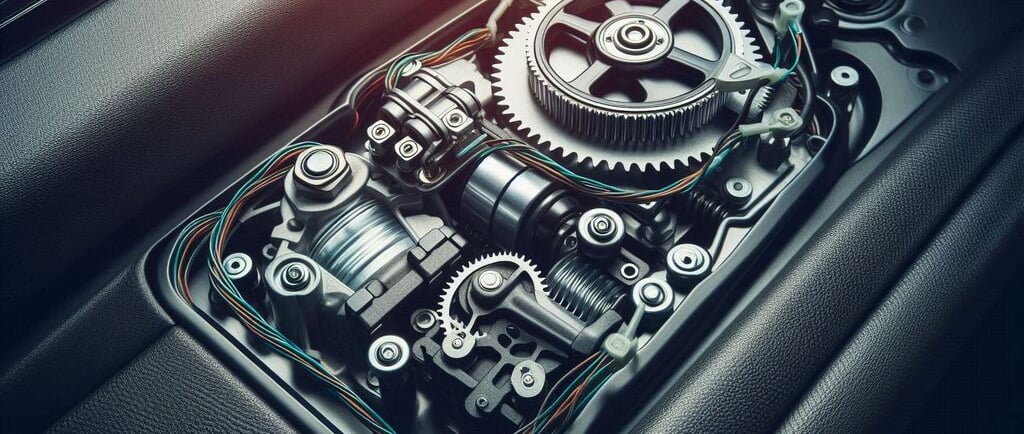Power Window Motors
Power windows have become a standard feature in most modern vehicles, offering convenience and comfort.
ELECTRICAL SYSTEMS
11/14/20244 min read


Power Window Motors: Everything You Need to Know for Smooth Operation
Power windows have become a standard feature in most modern vehicles, offering convenience and comfort. However, like all car components, the power window motor can experience wear and tear over time. Understanding how power window motors work, recognizing common issues, and knowing how to maintain them can save you time and money.
In this article, we’ll break down everything you need to know about power window motors, how to troubleshoot common problems, and the steps to take for proper maintenance.
What is a Power Window Motor?
A power window motor is the heart of your vehicle's automatic window system. It’s a small, electric motor that is responsible for raising and lowering your car windows at the push of a button. The motor works by converting electrical energy into mechanical movement, which drives a series of gears and pulleys that move the window glass up and down.
How Power Window Motors Work
Activation: When you press the window control switch, it sends an electrical signal to the window motor, causing it to start spinning.
Mechanical Movement: The motor’s spinning motion turns a gear, which moves the window regulator (a mechanism that physically moves the window up and down).
Smooth Operation: As the motor continues to rotate, the window moves smoothly along its tracks.
Power window motors are designed for convenience, but like all electrical systems, they can sometimes fail, resulting in windows that won’t go up or down properly.
Common Issues with Power Window Motors
While power window motors are relatively reliable, several issues can arise over time, leading to malfunction. Knowing how to spot these problems early can help you avoid costly repairs.
1. Slow or Jerky Window Movement
If your windows are moving slowly or making strange noises, the motor or its components may be failing. This could be due to a weak motor, worn-out gears, or a lack of lubrication on the window tracks.
Possible Causes:
Dirty or dry window tracks.
Faulty window regulator.
Worn or damaged motor components.
2. Window Won't Move at All
If your window doesn’t move at all, it could be a sign of a dead motor, a blown fuse, or a faulty switch. If the window motor is receiving power but not operating, it may need to be replaced.
Possible Causes:
Blown fuse or tripped circuit breaker.
Broken wiring or damaged power window switch.
Defective power window motor.
3. Window Falls Down on Its Own
Sometimes a window may fall down unexpectedly, even if you’ve just raised it. This typically indicates a problem with the window regulator, which controls the movement of the window. If the regulator is broken or damaged, the motor may still run, but the window won’t stay in place.
Possible Causes:
Broken window regulator or cables.
Motor damage preventing proper engagement with the regulator.
How to Diagnose Power Window Motor Problems
Diagnosing issues with power window motors is a straightforward process if you follow these steps:
Step 1: Check the Fuse
A blown fuse is one of the most common reasons for a power window failure. Consult your vehicle’s owner manual to locate the fuse box and check the fuse for the power windows. If the fuse is blown, replace it with one of the same amperage rating.
Step 2: Test the Switch
If the fuse is fine, the next step is to test the window switch. You can do this by pressing the switch and listening for any sound from the motor. If there’s no sound, the switch may be faulty and needs to be replaced.
Step 3: Inspect the Wiring
Sometimes, wiring can become damaged due to wear or improper installation. Check the wiring harness leading to the motor and switch for any visible issues. If there’s damage, the wiring may need to be repaired or replaced.
Step 4: Check the Motor and Regulator
If the switch and fuse are functioning properly, the issue may lie with the motor or window regulator. Remove the door panel to access the motor and inspect the components. If the motor is not functioning or the window regulator is damaged, these parts will need to be replaced.
How to Replace a Power Window Motor
Replacing a power window motor is a moderately complex job that requires some mechanical skill. Here’s an overview of the process:
Step 1: Remove the Door Panel
Use a screwdriver to remove the screws and bolts holding the door panel in place. Carefully detach the panel from the door, being cautious of any clips or fasteners that may still be holding it in place.
Step 2: Disconnect the Power Supply
Before removing the motor, disconnect the car battery to avoid any electrical hazards.
Step 3: Remove the Window Regulator
The window regulator is usually attached to the motor, and both components may need to be removed as a unit. Once detached, you can replace the motor and regulator with new parts.
Step 4: Install the New Motor and Regulator
After removing the old motor, install the new one along with the regulator. Make sure all connections are secure and that the motor is aligned properly with the window tracks.
Step 5: Reassemble the Door
Reattach the door panel, ensuring that all screws and clips are securely fastened. Test the window to make sure the motor is functioning correctly.
Preventative Maintenance for Power Window Motors
To keep your power window motors in good condition, regular maintenance is key. Here are some tips:
Lubricate the Tracks: Keep the window tracks lubricated with silicone-based lubricant to reduce friction and prevent the motor from working too hard.
Clean the Window Tracks: Regularly clean the tracks to remove dirt and debris that could hinder smooth window operation.
Inspect Components: Periodically inspect the motor, switch, and regulator for any signs of wear or damage.
Conclusion: Keep Your Windows Rolling Smoothly
A fully functional power window motor ensures that your windows are operating smoothly, but like all mechanical parts, they can wear out over time. By understanding how power window motors work, recognizing common issues, and knowing how to maintain them, you can keep your windows functioning well and avoid unnecessary repairs.



